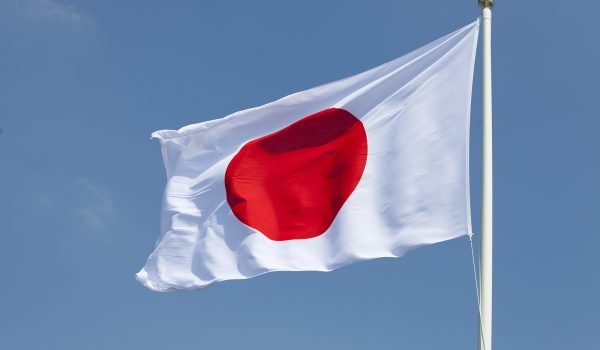The U.S.-Japan trade agreements, signed October 7, 2019, form a limited pact that focuses on certain agricultural and industrial goods, and in digital trade. The agreements will take effect on January 1, 2020, provided Japan ratifies them. In this article, we summarize the potential effect on:
- Agricultural Goods
- Industrial Goods
- Digital Trade Agreement
- Future Negotiations
- Outlook for Automotive
Agricultural Goods
Tariff relief for the U.S. under the Agreement is limited in scope to the goods and rates under the Comprehensive and Progressive Agreement for Trans-Pacific Partnership (CPTPP). U.S. agricultural exporters are expected to benefit from significant tariff reductions on beef, pork, wheat, wine, and cheese. New tariff rates are set to be on par with the rates enjoyed by other countries under the CPTPP, making U.S. agricultural exports such as beef more competitive in Japan’s market. However, the U.S. did not make gains on rice and other agricultural goods that were included in the Trans-Pacific Partnership (TPP) that the U.S. abandoned, such as powdered milk, butter, forest and wood products, and fish and seafood products.
Japan’s agricultural goods received much more limited U.S. tariff reductions. The Agreement mainly allows for tariff reductions on U.S. imports of beef, soy sauce, persimmons, and cut flowers. Japan gained access to the 65,005 ton allocation for reduced tariffs on beef (Japan’s original allocation was 200 tons) afforded to “other countries or areas.” So, on agriculture the U.S. was the net winner but it failed to open markets that would have been obtained if the U.S. had remained within TPP.
Industrial Goods
Japan in effect traded some opening for a limited range of U.S. agricultural products for reductions and/or eliminations in certain U.S. tariff rates on manufactured goods. Only Japan gained industrial goods benefits from the U.S.-Japan Trade Agreement. The U.S. agreed to reduce and/or (in two years for many goods) eliminate tariffs on specified industrial goods, including forged, machined, or manufactured metal, rubber, and plastic (e.g., machine-tools, bicycles, bicycle parts, steam turbines, railway parts, air conditioning machine parts, musical instruments, and machine tools operated by laser).
Digital Trade Agreement
A separately signed Digital Trade Agreement provides protections to enterprises and consumers of both countries. It bars the U.S. and Japan from imposing duties on electronic transmissions of information. Neither country may “prohibit or restrict cross-border transfer of information” if conveyed electronically for the purpose of conducting a business. Source code is protected from its transfer or access being a condition on “the import, distribution, sale, or use of that software.” Similarly, in the case of “information and communication technology goods” (ICT goods), either country may not condition the “manufacture, sale, distribution, import, or use” on the transfer of or access to proprietary information. Finally, consumers may enjoy laws mandated by the Agreement to protect them from “fraudulent and deceptive activities” in digital trade, and benefit from a legal framework to protect “personal information of users of digital trade.” The Agreement requires suppliers to obtain consent of recipients to send them “unsolicited commercial electronic messages” and for suppliers to give recipients a method of preventing arrival of such messages. It remains to be seen if elements of this Agreement will require U.S. congressional approval, as the Agreement itself was entered as an executive agreement not requiring the agreement of Congress.
Future Negotiations
A second negotiating round is to commence within four months after these initial Agreements take effect. Expected topics of negotiation include automobiles and auto parts (a major point of contention and importance), telecommunications, financial services, insurance, intellectual property, state-owned and controlled enterprises, and investment.
Outlook for Automotive
To the disappointment of Japanese negotiators, the initial Agreements did not cover automobile or auto parts. Vehicles and auto parts make up a third or approximately $56 billion (2018) of Japan’s exports to the U.S., and their exports will remain Japan’s greatest focus in coming negotiations. Japan seeks increased access to U.S. markets through the reduction or elimination of U.S. tariffs and exclusion from U.S. restrictions on the import of Japanese automobiles and auto parts. Because Japan does not impose customs duties or tariffs on U.S. automotive exports, the U.S. seeks to further increase Japanese automotive manufacturing in the U.S., which supported 170,000 U.S. jobs and amounted to $51 billion in foreign direct investment in 2018 according to the Bureau of Economic Analysis. The Trump Administration has reportedly stated that “at this point” it does not intend to increase tariffs, particularly U.S. Section 232 tariffs, on automobiles and auto part exports from Japan, a threat that the Administration continues to hold over European negotiators. With that tentative but positive message by the U.S., Japan hopes for progress on the auto front in 2020.
If you are in the Greater Cincinnati area, attorneys from Frost Brown Todd’s Japan Desk will be speaking about the US-Japan Trade Agreement during an event on Tuesday, Nov. 19 at New Riff Distilling in Newport, Ky. It is hosted by the Northern Kentucky Chamber’s International Trade And Affairs and the Japan America Society of Greater Cincinnati. Click here for more details.

